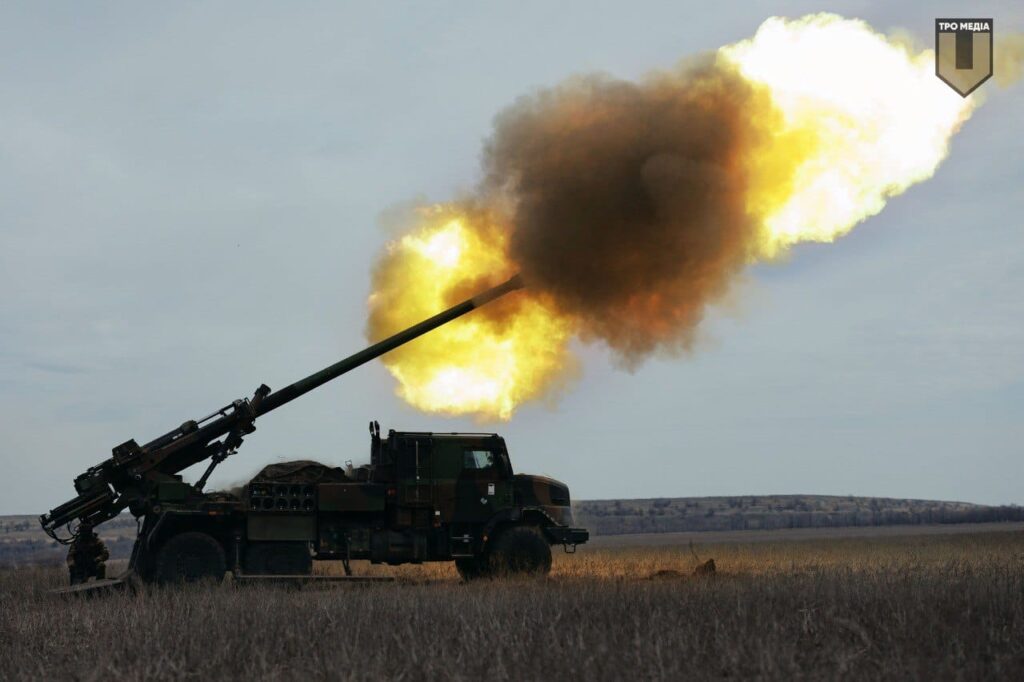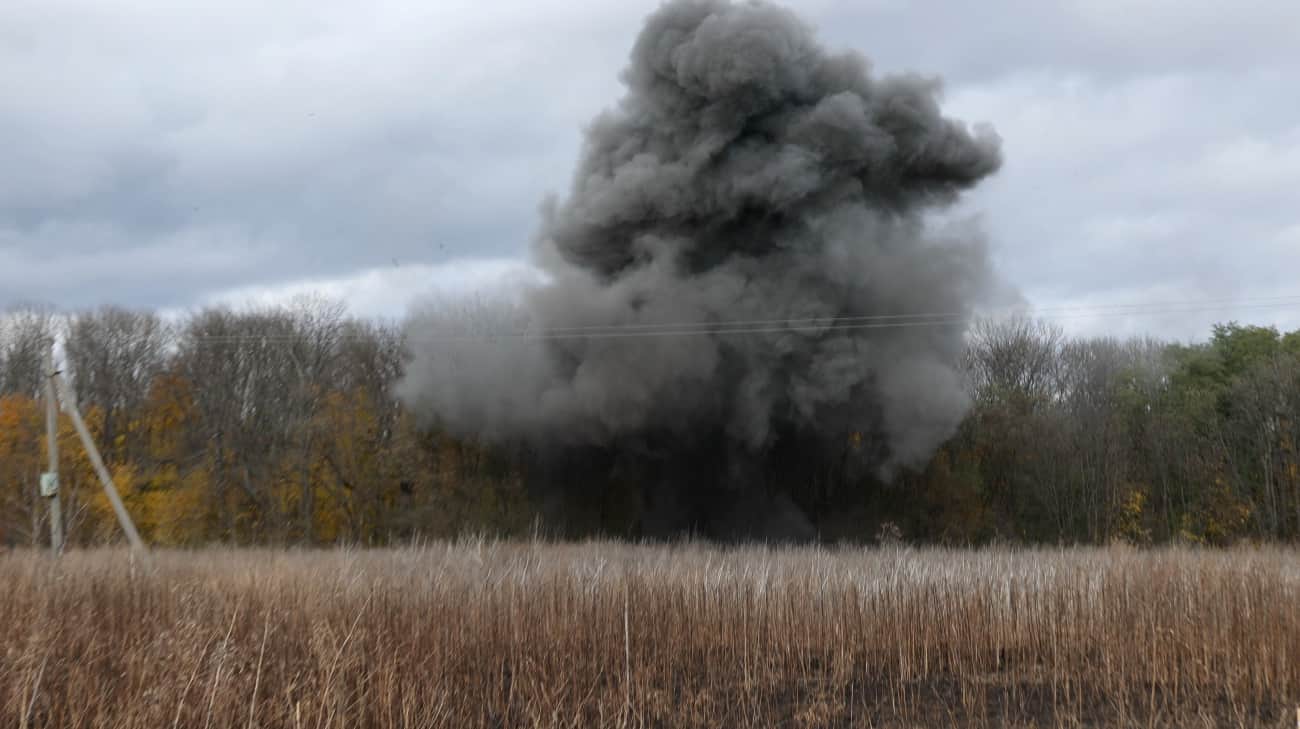Western aid to Ukraine is not charity, it’s self-preservation
Aid to Ukraine is paramoung in all "manageable balance" scenarios of the Russian invasion, whether exhaustion of Russian troops or talks


The ongoing Russian-Ukrainian war has shifted from consolidating Western unity to posing a potential threat of direct conflict with Moscow.
This evolution raises complex questions about Western involvement. Rather than asking, “How can we help Ukraine defeat a nuclear power without triggering a world war?” — a query that seems increasingly difficult to answer — we should reframe our approach. The more pertinent question is: “How can the West avoid losing to a nuclear power, and is Ukraine essential in this effort?”
To address this, we must consider various scenarios that fall short of global war. These can be broadly categorized into two approaches:
- Passive strategies, while less costly in terms of resources, may lead to strategic defeat even if direct confrontation is avoided.
- Active approaches, on the other hand, offer more preferable and sustainable long-term outcomes.
The critical factor distinguishing these strategies is the level of Western assistance to Ukraine.
Facts and context
The disparity in military spending between Ukraine and Russia has widened significantly in 2024. Ukraine’s budget stands at $40.7 billion, while Russia’s has surged to $115 billion. This gap has grown since 2022, when the figures were $44 billion and $86.3 billion, respectively.
Russia’s commitment to defense is even more striking in the long term. Reuters reports that Moscow plans to allocate $600 billion to defense and security from 2022 to 2025, suggesting further increases in military expenditure that will far outpace Ukraine’s capabilities.
Despite Kyiv’s apparent success in halting a new Russian offensive in the Kharkiv area, this situation poses significant challenges for Ukraine’s strained armed forces and struggling economy. The pledged minimum of $40 billion per annum in assistance from NATO countries is likely insufficient to tilt the balance in Ukraine’s favor or achieve clear political goals in the near future.
Potential outcomes: passive stance and strategic defeat
A scarcity of aid could significantly impact Russia’s perception of Western resolve. This might encourage the Kremlin to adopt more aggressive tactics, including attempts to seize additional territory and coercing Ukraine into concessions through persistent missile strikes
Such actions could lead to internal destabilization in Ukraine, undermining its role as an effective deterrent against Russian aggression. Consequently, closing the capability gap between Kyiv and Moscow would require a substantial increase in Western spending.
In that case, escalation management will be totally out of reach for the West — which is no less dangerous than escalation on the part of Ukraine (for instance, strikes on Russian oil refineries) as it will necessitate hastily organized talks on heavily unfavorable starting terms.
The West faces a dilemma in these potential negotiations:
- Non-participation would force acquiescence to outcomes determined by others.
- Direct participation would legitimize Russian gains, potentially eroding trust in Western-led security partnerships and the rules-based international order.
Attempts to later promote these principles by supporting what remains of Ukraine would likely prove ineffective. Even initiatives like Zelenskyy’s Peace Formula may be inadequate to address such a complex situation.
The consequences of Ukraine’s defeat could extend beyond the immediate conflict. China, with its significant influence over Russia and importance to the EU, could gain diplomatic leverage. This might pave the way for China’s increased security role in Eastern Europe, contrary to US interests.
Furthermore, if the Western stance lacks cohesion and the US shifts its focus elsewhere, the EU’s security and stability could be compromised. The EU is not equipped to be the primary security provider in such a scenario. History has shown that leaving Ukraine to be handled solely by Europeans, as attempted with the Minsk agreements in 2014, is not an effective strategy.
Active stance: an imperfect but manageable balance
The current scenario of gradual and prolonged exhaustion of Russian troops without settlement, while less sustainable than in previous years, remains viable with consistent Western support. This approach could lead to negotiations based on either Russia’s relative advantage or mutual exhaustion – both preferable to Ukraine’s outright defeat.
To secure favorable preconditions for potential talks, Ukraine requires constant and predictable aid. This support serves two crucial purposes:
- It reduces Russia’s perceived benefits of continuing the conflict.
- It prevents Moscow from imposing maximalist terms when Kyiv has no alternatives to negotiation.
Consequently, the transition to “peace” becomes more manageable.
If a settlement is reached through mutual exhaustion and relatively equal negotiations, its sustainability will hinge on an appropriate balance of forces. Achieving this balance requires Western assistance and should begin immediately.
Beyond the Ukrainian context, broader considerations are crucial. Russian nuclear brinkmanship and threats to Central European states are likely to persist, regardless of Ukraine’s fate. This was evident in Moscow’s pre-invasion ultimatums to NATO. Therefore, sacrificing Ukraine would not necessarily prevent nuclear war threats.
The more significant concern, as Randall Schweller suggests, is the risk of underbalancing against Russia’s further belligerence in Europe.
While some may argue that the West has previously demonstrated its ability to curb Moscow’s ambitions, citing Cold War experiences, the current situation differs significantly. During the Cold War, American-Soviet relations in Europe resembled a balance between two status quo powers. In contrast, today’s Russia is clearly revisionist, willing to take greater risks and mount offensive actions.
The West, meanwhile, has not fully embraced a deterrence-by denial strategy despite advocating for it more strongly since Russia’s 2022 invasion of Ukraine. NATO allies still require time and resources to build a force of 300,000 troops at high readiness for the eastern flank.
In the interim, Ukraine’s 1,000,000-strong army serves as a de facto response force, providing a buffer that spares the West from having to significantly increase its own deterrent capabilities, which might lack both capacity and credibility.
Aid to Ukraine necessary to avoid West’s strategic defeat
Aid to Ukraine is a crucial factor in all “manageable balance” scenarios of the Russian invasion, including:
- Gradual and prolonged exhaustion of Russian troops without settlement
- Negotiations based on relative Russian advantage
- Talks resulting from mutual exhaustion
- Maintenance of any post-war settlement that may be reached.
Continued assistance to Ukraine not only makes these scenarios viable but also helps the West avoid a strategic defeat and its consequent repercussions.
While the likelihood of a decisive victory in this war remains low, maintaining or enhancing Ukraine’s current position appears more favorable when considering the logic of transitivity of preferences. This approach provides the West with more significant influence over the conflict’s outcome without exposing it to additional risks.
Regarding conventional capabilities, Russia may require substantial time to recover from its losses. While this prospect may seem reassuring for the West, recent events suggest caution. Russia’s retreat from several Ukrainian regions in 2022 and the subsequent course of the war indicate that Russia’s recovery period might be shorter than anticipated, potentially posing additional threats to European security.
Ukraine has become an integral part of the Western-led security architecture in Europe. This framework has the potential to return to a manageable state of normalcy or even improve compared to the pre-2022 situation. Alternative scenarios risk dangerous global shifts that could jeopardize our collective security and are, therefore, best avoided.
This text is part of the project “Pragmatic Dialogue with the West: Why It Is Worth Supporting Ukraine,” undertaken with the support of the International Renaissance Foundation. It presents the views of the author and does not necessarily reflect the position of the International Renaissance Foundation.
Editor’s note. The opinions expressed in our Opinion section belong to their authors. Euromaidan Press’ editorial team may or may not share them.
Submit an opinion to Euromaidan Press
Related:
- Five realistic scenarios of war in Ukraine in 2024: GLOBSEC report
- What’s at stake if Ukraine loses?
- Support Ukraine now or pay more later, Dutch think tanks tell West
- “Mom, is it a nuclear bomb?” Ukrainian MP Sovsun on parenting, parliament, and perseverance in Kyiv



